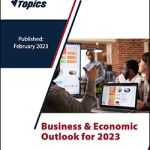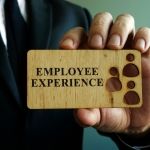
Any organization looking for calm and consistency may be looking for another decade, or maybe century! Uncertainty rules the day in 2022 and there are variables in today’s workplace that have not existed in a lifetime. Recent business adaptations include moving to quarterly budgets rather than annual forecasting, bi-annual salary increases, contingency planning, scenario building exercises, the breakdown of bureaucracies, and flexible organizational structures. Why, you ask? There are several reasons.
The workplace. When, how, and where work is done has changed for many industries and companies. Hybrid arrangements are preferred by businesses with the flexibility to offer them, but those introduce challenges with communication, fairness between employees and departments, and accountability, making those day-to-day activities more difficult.
Diversity, equity, and inclusion (DEI). The last few years have proven to be pivotal in terms of social movements for justice and many companies have responded by placing a greater focus on DEI efforts. The trend is expected to continue, with a renewed emphasis on transformative strategies tied to recruiting, onboarding, and engaging talent, as well creating a culture of inclusion throughout the organization.
Work/life balance. Is there such a thing these days? It is better described as a blend rather than a balance. Parents are teaching their kids at home part of the day, then using time after dinner to finish work. Time to decompress vanished, adding stress to everyday life. It is no surprise that mental health is part of regular conversation in most organizations. As a result, more supportive benefits and attention are directed toward employees’ emotional wellness.
New business. Sales were tricky during the pandemic. Some companies were able to maintain good working relationships with clients, while others could not find their niche in the midst of constant change. Businesses have had to reimagine ways to deliver products and services based on a multitude of customer preferences. The advent of curbside pickup arose from necessity and has become a great benefit. But cultivating new relationships without the luxury of sitting down together has put a strain on relationship building and trying to woo new customers has proven to be difficult.
Health care. No workplace benefit has had as profound an effect on business planning as health care. The pandemic halted routine check-ups, potentially delaying important diagnoses, the consequences of which are still in question. That, combined with proposed legislation addressing the need for more transparency in pricing, costs, and managing care, continues to cause consternation for company leadership.
Politics. Regardless of an individual’s personal views, everyone can agree that things have become more polarized. This polarization often results in public policy swings when power changes hands from one party to the other, especially when the changes impact workplace policies and procedures. It can be very disruptive, especially when employees take a position on “hot button” issues. As a result, HR leaders are spending more time encouraging respectful speech, thoughtfulness, and constructive conversations.
World events. The recent attacks on Ukraine have set off a series of falling economic dominos, causing a scramble for resources, military support, and pleas for help. Gas and food prices have risen, and certain essentials are hard to come by. A troubled government, natural disaster, or political dust-up can affect the strength of the dollar, interrupt exporting, or shut down a supplier. Nothing is more out of control for business leaders than world events, so contingency planning has become a way doing business.
Quality of life. As strange as it may sound, quality of life matters to businesses as much as people. Companies have recognized that an area with a low cost of living, quality schools, good parks, diversity, safe cities, and an active social life attracts employees and suppliers and offers a better lifestyle for everyone associated with the organization.
Supply chain. Those two words may have caused more angst in the past few years than anything, with the possible exception of talent. The inability to find product, in the proper amount, at a reasonable price, that could be delivered on time, has become a fantasy. When product is found, companies hyper-purchase, in an effort to meet and get ahead of customer need, further driving up cost and reducing supply.
Emerging leaders. The exit from the workforce of so many baby boomers has resulted in a rapid changing of the guard for many businesses. Leaders are taking over at 35 instead of 55, without the benefit of spending years watching others make mistakes and learning from those experiences. Employers have begun focusing on bench strength and developing clear paths for the advancement of emerging leaders by providing more exposure to senior leadership, offering formal mentoring programs and career support. At the same time, companies are utilizing the incredible strengths of the younger workers in areas like technology, including software, programming, integration, drones, and gaming. Younger workers are taking the lead in social justice, social media platforms, and public presentations as well.
Total rewards. “It’s not a benefit if I don’t think it’s a benefit!” Employees are looking for different things in their benefit packages and employers are adjusting to attract and retain talent. Assistance with student loan repayment has become popular, flexibility with shifts and work hours has become a given, and remote work has become a differentiator for many.
Learning and development. A thoughtful learning and development plan and a clear career path have become a standard request for younger employees. Besides providing shorter and on-demand training options, businesses are offering other nontraditional opportunities. Volunteer work, learning groups, sitting in on senior team meetings, leading strategic initiatives, attending board meetings, job rotations, reverse mentoring, and small project management are emerging among requests for growth.
Talent. The perfect storm of an aging population, lower birthrates, and employees migrating out of the workplace, combined with the number of jobs available and mismatched skill sets of the people seeking employment is making things tough. Workers who feel that their employer has not done enough to engage, support, and care about them migrate to companies that are a better cultural fit. Forward thinking companies have made changes to hold on to top talent—offering things like growth opportunities (think upskilling and reskilling), compensation adjustments, and culture change. This includes a focus on trust, well-being, transparency, and resiliency. It has been an employees’ employment market and companies have had to become innovative with pay, benefits, corporate culture, and workplace flexibility in order to attract and keep the best and brightest.
Organizations looking to get ahead of the trends may refer to these reasons as a guide, but should also talk with employees to understand what they value and what will help them reach their goals.
For a deeper conversation about what is driving change for organizations, contact Jim Morgan, Vice President of Business Development and Workforce Strategies, at 262.696.3309 or [email protected].






